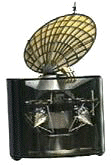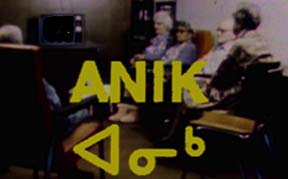
|

|

|
Telsat launched its first satellite Anik1. Anik is the Inuit word for Little Brother. Anik1 was the first domestic satellite in an orbit which never changed. This satellite, in order to reach its orbit point over the equator, was launched by a Delta Rocket in 1972.

1973 brought the start of commercial broadcasting. What this meant was that the revolution of broadcasting could begin. The CBC was the first to sign on with Telsat this was a direct result of the intense observation they had on the growing company. This new satellite gave the CBC the ability to reach the Canadian North for the first time. The Anik was the first National Satellite Television System in the world. The CBC began to explore the possiblities of satellite technology in the 1960's. They were looking for a cost effective way to broadcast over the entire country without having to use expensive cables and microwave stations.
The CBC were the first to sign on to Telstat, a Canadian communications company who had been working on satellite technology since the 1960's. Telstat launched it's first satellite Anik 1 in 1972. Anik is an Inuit word which stands for “little brother”. Launched by a delta rocket, it was the first domestic satellite in geosyncronis orbit (an unchanged orbit over the equator). 1973 brought commercial broadcasting. This new satellite gave the CBC the ability to reach the Canadian North for the first time. The Anik was the first national satellite television system in the world.
The CBC aired a special report on the Anik Satellite Which stated:
 This special television program with Inuktitut subtitles marked the official inauguration of Radio-Canada television in the North - telecast via ANIK 1 satellite. Launched from Cape Canaveral in Florida on 7 November 1972, ANIK 1 was the first domestic communications satellite in the world. Its purpose was to bring television to the arctic region and to upgrade radio and telephone communication system. Bernard Derome, who appeared frequently on special programs between 1969 and 1973, is the host.
This special television program with Inuktitut subtitles marked the official inauguration of Radio-Canada television in the North - telecast via ANIK 1 satellite. Launched from Cape Canaveral in Florida on 7 November 1972, ANIK 1 was the first domestic communications satellite in the world. Its purpose was to bring television to the arctic region and to upgrade radio and telephone communication system. Bernard Derome, who appeared frequently on special programs between 1969 and 1973, is the host.What are the Challenges of Satellite Technology?
Satellites play an important role in the broadcasting of elections because of their ability to send information almost immediately. As a consequence, in Canada, a country with many different time zones, it is sometimes necessary to black out broadcasts of elections in certain areas for awhile so as not to influence voting. For example, coverage of a federal election whose polls are open until 8:00 pm would have to be blocked out from 3:30 pm to 8:00 pm in British Columbia. If this was not the case, before the vote was over people in British Columbia would know who was winning before they cast their vote. Not wanting to risk the chance of influencing an election, broadcasts are blacked out until polls have closed.




